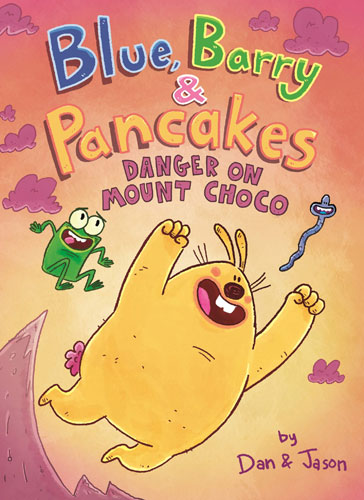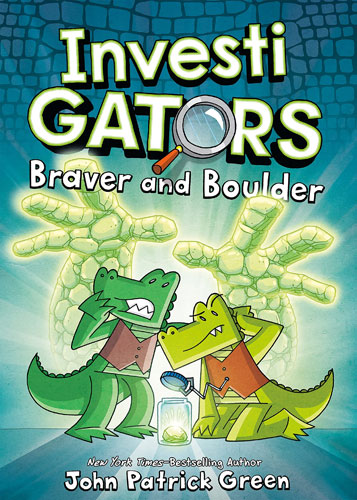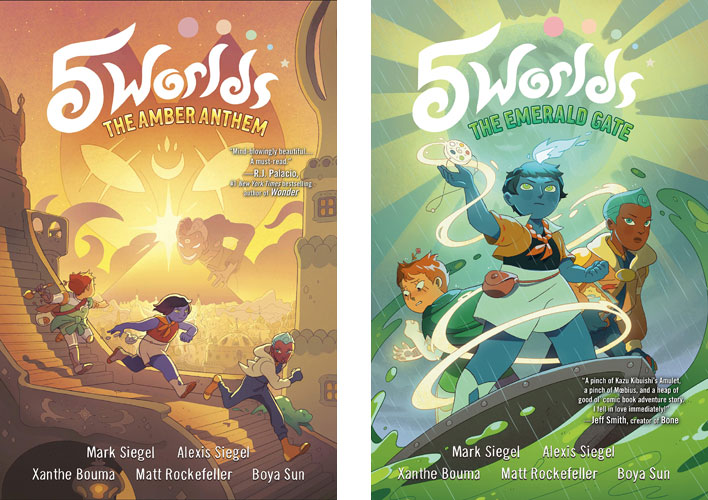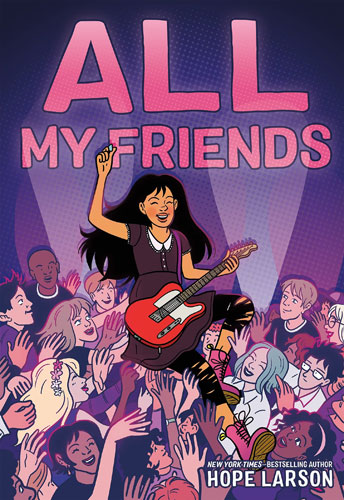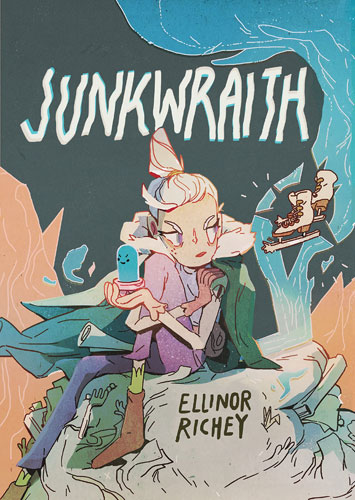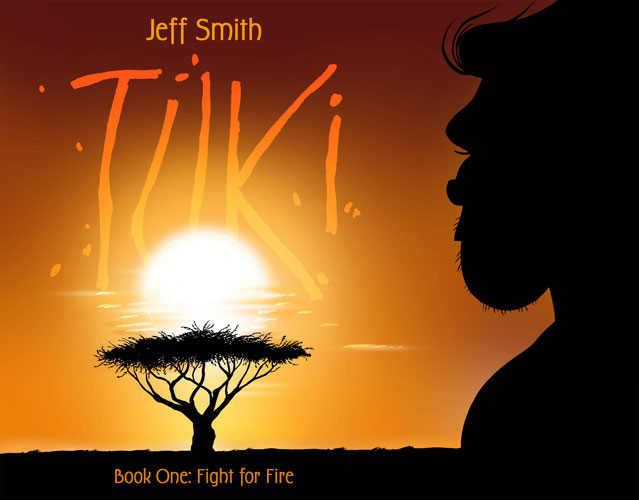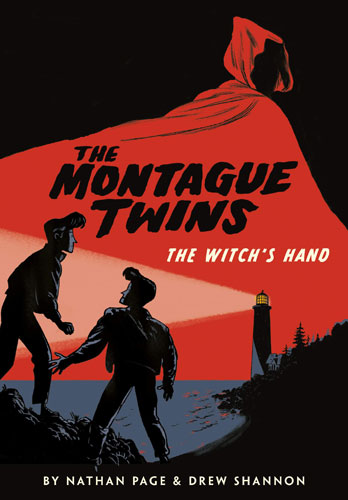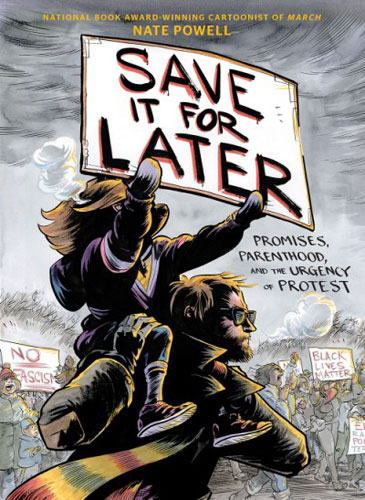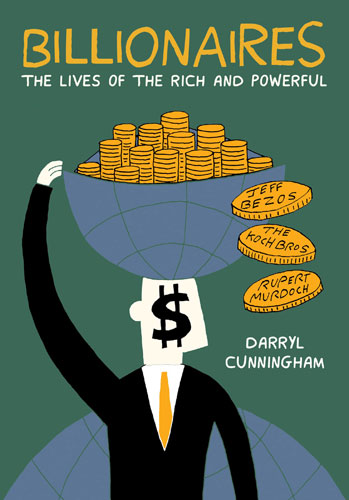Hope you’ve enjoyed our posts over the past few weeks reflecting on the past year and looking ahead to the new year! In the meantime, I’ve been reading a bunch during my kids’ winter break, so I’ve got a big pile of recent reads to share with you now.
Today, let’s cover some comics!
Blue, Barry & Pancakes: Danger on Mount Choco by Daniel Rajai Abdo and Jason Linwood Patterson
This is the third book in this comic book series for younger readers, featuring three friends: a bunny, a frog, and a worm. You don’t have to have read the first two books since this story is fairly self-contained, though there are some references to the earlier books thrown in here and there. This time, Barry (the frog) would really love to win a trophy, so the friends enter a sundae-making contest. Seeing the competition’s sundaes, Barry makes a plan to travel to Mount Choco to acquire the best chocolate ever—but it’s a dangerous quest, and the chocolate is said to be guarded by a fierce yeti. The BBP books are quite silly and this one is no exception—but it also does have lessons about being overly competitive and just enjoying time spent with friends.
InvestiGators: Braver and Boulder by John Patrick Green
Here’s another silly series that my third grader and I have enjoyed: in book 5, Brash and Mango are both back in action, though the S.U.I.T. headquarters is still being repaired so things are a little weird. The city is smitten with the latest fad: Boulder Buddies—glowing green pet rocks sold at an antique store—but there’s definitely something weird about them, particularly when they all go missing one evening. Anjie, the antique store owner, has gone missing, and the only clue she left behind was the name “Rock Mobster.”
The InvestiGators books are filled with puns, self-referential jokes, and even a couple of musical montages. Brash continues to come to terms with his failure to save his former partner, Daryl, who has been antagonizing the gators in ever-evolving forms in the previous books, so there are parts that are a little more serious but not too heavy. If your kid enjoys spies and gadgets and jokes, this series is a lot of fun!
5 Worlds: The Amber Anthem and The Emerald Gate by Mark Siegel, Alexis Siegel, Xanthe Bouma, Matt Rockefeller, and Boya Sun
I’d somehow missed the fourth book in this series—I blame the pandemic—but got caught up in time for the conclusion, which comes out this week. This series takes place in a small system of 5 worlds (a planet and its four moons), each of which has an ancient beacon of unknown purpose. Oona Lee has discovered how to light the beacons, and believes that lighting all of them is the key to restoring balance to the worlds, but there are a lot of forces at work against her. Each of the five books in the series focuses on one of the worlds, as Oona makes her way across the worlds with her friends Jax Amboy, a robot who is becoming more human, and An Tzu, who is suffering from a vanishing disease that isn’t fully understood.
In The Amber Anthem, the team arrives on Salassandra, a site inhabited by people from a multitude of religious traditions, and not everyone is happy about the idea of Oona lighting the beacon. But the beacon is encased in amber, and she’s been told that she will need to unite 10,000 voices in order to unlock it. In the final book, The Emerald Gate, they go to Grimbo(E), an ocean world covered with a dangerous moss—and the beacon is nowhere to be found. An Tzu has learned some secrets about his own past, and fears that perhaps Oona shouldn’t light the last beacon after all.
My kids and I have enjoyed this series—the artwork is lovely, and it’s fun to see the various worlds that Oona visits, and the way that each planet has its own quirks and secrets to unlocking and lighting the beacons. The gradual reveals about An Tzu, the unveiling of the ancient history of the beacons, and the way that Oona grows into her powers all make for an exciting journey.
All My Friends by Hope Larson
This book (releasing next week) follows All Summer Long and All Together Now, a series about Bina and her music and growing up. Bina’s new band is doing well, and they even get offered a record deal—but her parents don’t feel like it’s the right time for that yet, which puts a big strain on their relationship. These books include a lot of familiar parts of growing up—navigating friendships and dating, wanting more freedom, figuring out who you want to be—but there’s also a lot that is specific to being a musician. Bina finds out what it’s like to have fans at her school, but is also still star-struck herself by more experienced musicians and people in the industry. One thing I like about these stories is that Bina experiences both ups and downs—some difficulties are caused by others, but some she brings upon herself, and she learns to cope with both, and sometimes has to figure out the best compromise, too.
Junkwraith by Ellinor Richey
Florence is training to be an ice skater, but the pressure to succeed and the teasing from the other skaters prompts her to throw away her skates, bringing to life a junkwraith, a ghost made of the negative energy, seeking revenge for being abandoned. The junkwraith attacks Florence’s memories, so she has to figure out how to get rid of it before she forgets who she is.
The world of Junkwraith is quite different from our own: everyone has a Juju, a bean-shaped personal digital assistant that has its own distinct personality. The city is surrounded by wastelands that very few venture into—a forest made of scrap paper, mindscapes that shift based on your own memories, a cave that was apparently occupied by somebody. And there are some other curious characters, too, some of whom have forgotten their own histories. The story is strange and meandering in some places, but overall I liked the sense of wonder that came from figuring out how things worked along the way, since things aren’t fully explained for you right from the start.
Tuki: Fight for Fire by Jeff Smith
Jeff Smith is best known for the Bone series, but after that story concluded he’s still been working on other comics, too. The latest is Tuki, which takes place in prehistoric times, when many types of humans walked the earth: Australopithicenes, Habilenes, and our own forebears, Homo erectus. Tuki is the last of these, and is traveling alone, bearing a few tools and weapons. He’s searching for a giant herd of buffalo, but encounters several other types of people along the way.
There’s a mystical element to the story, too: the old Homo habilis claims to be able to see the hidden world, and warns that fire is not meant for people to use. They also encounter some giants, ape-like beasts that come from the hidden world. It’s a fascinating exploration of early humanity—not as fanciful as the Bone series perhaps, though there are still some funny gags and thrilling action sequences. The book itself, adapted from a webcomic, is a large-format book that really showcases Smith’s artwork. The second book, Fight for Family, is expected later this year.
Fly by Night by Tara O’Connor
Dee is back in her hometown with her dad, but it’s not just for a pleasant visit: her twin sister Beth (who stayed behind with their mom when the parents divorced) has gone missing, and Dee is hoping she can find some answers. Attending high school is awkward, since the two sisters looked so much alike; Dee manages to reconnect with a close friend, but Beth’s boyfriend is acting a bit creepy for some reason. And then Dee has an encounter in the forest that makes her wonder if all the stories about the Jersey Devil might be true after all. On top of all of that, the town is trying to fight a proposed oil pipeline, and several of the students are working together with the teacher to find ways to block it—could they claim the Jersey Devil as an endangered species to save the pinelands? And what does any of this have to do with Beth’s disappearance?
This graphic novel takes what seems to be several disparate threads and weaves them together, telling a story about family and loss and fighting for what’s right. I like the way that it takes the legend of the Jersey Devil and fits it into this modern-day setting. I also appreciated the portrayal of Dee’s parents, who find themselves thrown into close proximity again by circumstances: it wasn’t a magical Hollywood ending about falling back in love, but instead about figuring out a way to break old patterns and move on.
The Montague Twins: The Witch’s Hand by Nathan Page & Drew Shannon
This comic book kicks off a series that feels a bit like a throwback to the Hardy Boys, with two teenage twins solving mysteries in the late ’60s … though that may be where the similarities end. At the start of the book, Peter and Alastair have just gotten a bit of fame by tracking down a missing dog, and they’re excited to go spend the reward money along with their stepsister Charlie. But at the beach, a strange storm appears above the lighthouse, and the brothers find themselves caught up in something supernatural. Okay, so maybe there’s a touch of Scooby-Doo in there as well, though in this case it’s not just an old dude in a monster mask. There’s real magic in this world, and as the kids uncover some of the town’s secrets, there are others working very hard to keep them buried.
I really enjoyed this one—there’s a good mix of adventure and humor, but there’s also a serious side to it as well. Although the story takes place in the ’60s, some of the characters in the story challenge the status quo in various ways. The town’s history includes a tale about a witch, but as the kids delve deeper they discover that perhaps there are other villains in the story. The second book, The Devil’s Music, should be out soon, and I’m looking forward to it.
Save It for Later: Promises, Parenthood, and the Urgency of Protest by Nate Powell
These last two books in my list are non-fiction, and both are definitely politically left-leaning, so I figured I would mention that right up front.
Nate Powell worked with the late Congressman John Lewis on the March trilogy about the civil rights movement, and this book is a collection of illustrated essays of his own. Many of them are autobiographical, depicting himself and his family, with his kids drawn as imaginary animals. Powell and his wife talk to their two young daughters about what’s going on in the world, what they’re seeing on TV, why they’re voting the way they do, and so on. A lot of the essays are about the past few years, particularly the 2016 election. One chapter discusses the way that police and paramilitary forces have started to blend together, and examines the particular look that many have adopted, from the Punisher skull logo to the colorless American flag. Another is about the impact of 2020, from the onset of COVID-19 to the protests sparked by George Floyd’s murder, a lament at the growing divide between us.
Your reaction to this book will largely depend on where you stand on various issues, and I don’t know that it’s written to change anyone’s mind so much as to express a sense of frustration and anger. Regardless of which way you lean politically, you probably won’t find this a pleasant book to read, but it may at least help you feel not as alone in your struggles. As the subtitle suggests, there’s an urgency to this for Powell—he doesn’t view this as just more of the same old politics, but as a critical point in our democracy, one that requires him to speak out. If you feel similarly, that our democracy itself is at risk, then you may find yourself nodding along with this book; on the other hand, if you think things are overblown, then you may write this off as an overreaction. The book was published in April 2021 (with the most recent essays written in the fall of 2020), so it predates the election and everything that has happened since.
Billionaires: The Lives of the Rich and Powerful by Darryl Cunningham
This comic book tells the story of a few powerful billionaires—Rupert Murdoch, the Koch brothers, and Jeff Bezos—and it is not particularly kind about them. For each one, the book gives some biographical details about their childhood and early life, but most of the book focuses on the ways that they gained their wealth, and then what they’ve done with it. While all of these are familiar names to me and I had a notion of who these billionaires are now, there was still a lot I didn’t know, especially in the case of the Koch brothers.
Rupert Murdoch’s media empire (including FOX News, of course) has had an enormous influence on global politics, and this book traces the beginnings of that empire and how it was built. Seeing it all laid out like this makes it even more concerning that so much power can rest in the hands of just a few individuals.
The section about the Koch brothers focuses on Charles and David (now deceased). It does introduce the other two brothers Fred and Bill and shows how conflicts within the family eventually ousted them and left control to Charles and David, and then follows the various places where they invested their wealth—in particular, investing in ways that gave them political power, often through companies and organizations to make it harder to trace a connection to them.
Jeff Bezos was the most familiar to me prior to reading the book, simply because it’s a more recent story that largely takes place after I was old enough to start paying attention. Even so, I hadn’t spent much time reading about Bezos’ childhood and early adulthood, or what he did before starting up Amazon. The book recounts how Bezos built Amazon, how he went from selling books to selling everything, and the effect that has had on so many industries. It also talks about Bezos’ more recent pursuits like space travel and the Clock of the Long Now (intended to keep time for 10,000 years).
The book touches briefly on some of the ways that these billionaires have used their wealth to benefit society—funding medical research, for instance, but its focus is on the way that the super-rich exert outsize control over our economy and our government, usually to their own benefit, and the author notes in the afterword that he’s more concerned with that influence rather than whether it is spent on more conservative or liberal interests (though the people profiled in this book are primarily conservative or libertarian). Billionaires has an agenda and doesn’t try to hide it, so the book can feel one-side; for the most part I felt Cunningham made a pretty convincing case about the way wealth gives a small group of people too much control over the world. The book doesn’t have a lot of answers—a few suggestions are made briefly in the afterword—but it does try to get us to start asking more questions.
My Current Reads
I’ve read a few novels over the past couple months as well, so hopefully I’ll be able to share those with you next week! I’m currently reading LIFEL1K3 by Jay Kristoff, a young adult novel set in a post-war future with robots who don’t all have to follow the Three Laws of Robotics. I also started Run, a followup to John Lewis’ March—it was almost complete when Lewis passed away, but it continues his story about what happened after the Voting Rights Act was signed in 1965.
Disclosure: I received review copies of these books. Affiliate links to Bookshop.org help support my writing and independent booksellers!

